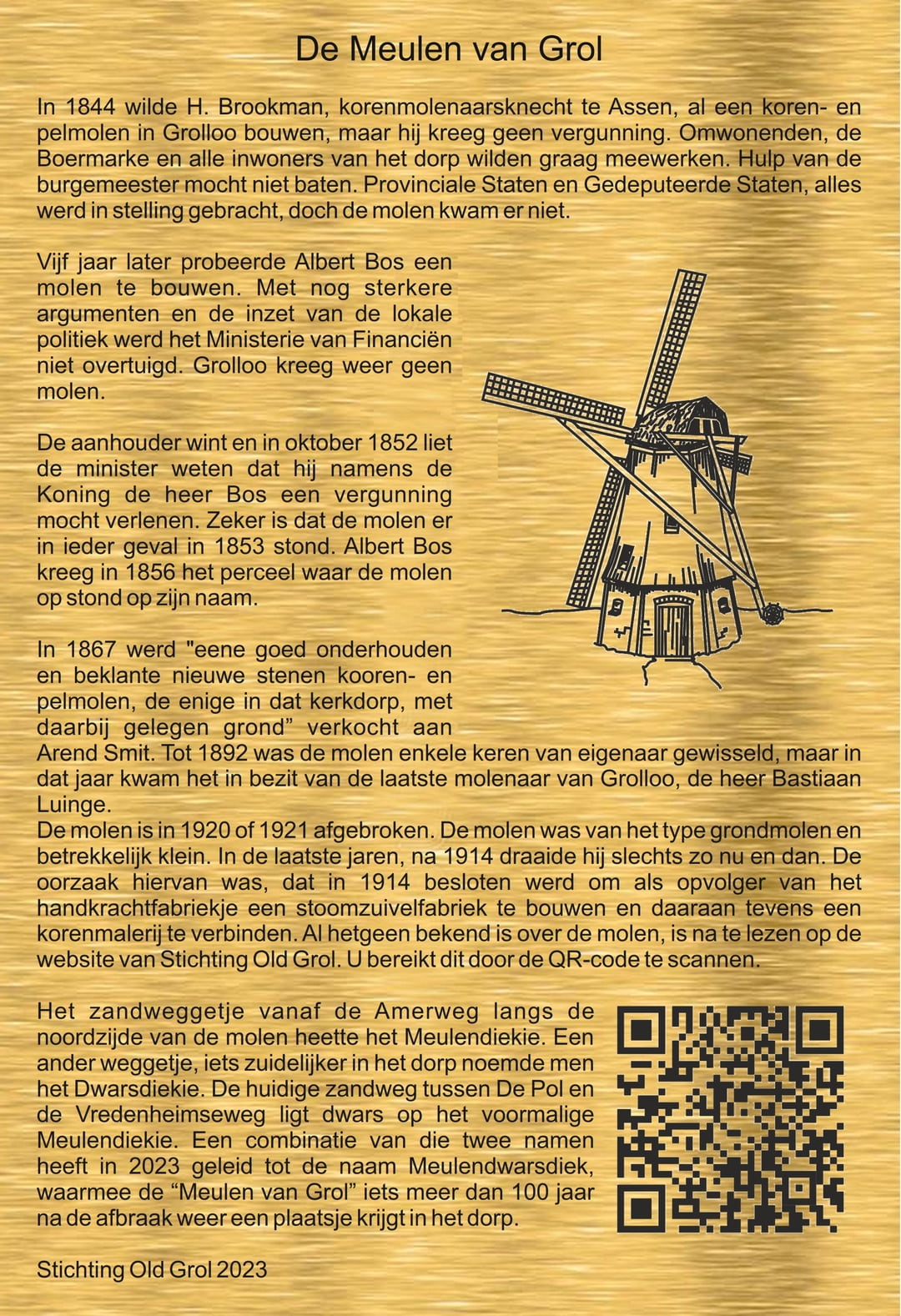The Mill of Grolloo
 The text on the plaque
The text on the plaque
In 1844, H. Brookman, corn miller's assistant in Assen, wanted to build a corn and hulling mill in Grolloo, but he was not granted a permit. Local residents, the Boermarke and all residents of the village were happy to cooperate. Help from the mayor was of no avail. Provincial Council and Provincial Executive, everything was set up, but the mill did not come.
Five years later, Albert Bos tried to build a windmill. Even stronger arguments and the efforts of local politicians failed to convince the Ministry of Finance. Grolloo did not get a mill again.
The perseverance wins and in October 1852 the minister announced that he could grant Mr Bos a permit on behalf of the King. It is certain that the mill was there in any case in 1853. In 1856 Albert Bos received the plot on which the mill stood in his name.
In 1867, "a well-maintained and well-maintained new stone corn and hulling mill, the only one in that church village, with adjacent land" was sold to Arend Smit. Until 1892, the mill had changed hands several times, but in that year it came into owned by the last miller of Grolloo, Mr. Bastiaan Luinge.
The mill was demolished in 1920 or 1921. The mill was of the ground mill type and relatively small. In the last years, after 1914, he played only occasionally. The reason for this was that in 1914 it was decided to build a steam dairy factory as a successor to the hand power factory and also to connect a flour mill to it. Everything that is known about the mill can be read on the website of the Old Grol Foundation. You achieve this by scanning the QR code.
The dirt road from the Amerweg along the north side of the mill was called the Meulendiekie. Another road, a little further south in the village, was called Dwarsdiekie. The current dirt road between De Pol and the Vredenheimseweg is perpendicular to the former Meulendiekie. A combination of those two names has led to the name Meulendwarsdiek in 2023, with which the “Meulen van Grol” will regain its place in the village just over 100 years after its demolition.


